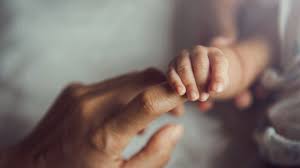
United Kingdom, July 18. - In a pioneering development, eight healthy babies have been born in the United Kingdom thanks to a revolutionary technique that combines the DNA of three different people to prevent the inheritance of rare and often fatal genetic diseases.
This innovation was made possible by a 2016 change in British legislation. Although banned in the United States and many other countries, the technique is also permitted in Australia. The news “marks an important milestone,” said Dr. Zev Williams, who directs the Columbia University Fertility Center but was not involved in the work.
“Expanding the range of reproductive options will allow more couples to seek safe and healthy pregnancies.”
Why mitochondrial diseases are so dangerous
Most of our DNA comes from the cell nucleus, inherited from both the mother and the father. But there is also DNA outside the cell nucleus, in structures called mitochondria, tiny energy-producing structures that only come from the mother.
When mitochondrial DNA carries dangerous mutations, it can cause serious and often untreatable diseases in children, from seizures and muscle weakness to organ failure and premature death.
Embryo screening during IVF (in vitro fertilization) sometimes detects these mutations, but not always. In these rare and uncertain cases, scientists have developed a pioneering solution: replacing the mutated mitochondria with healthy ones from a donated egg. The genetic material of the mother is extracted and inserted into a donated egg from which its own nucleus has been removed, keeping the donor’s mitochondria intact but none of its features. The resulting embryo contains DNA from three people: mother, father and a third mitochondrial donor.
Results of the British Study
Researchers from Newcastle University (UK) and Monash University (Australia) published in the New England Journal of Medicine that they applied the technique to embryos from 22 women. So far, eight healthy babies have been born, and one woman is still pregnant. According to experts, one of the babies had slightly elevated levels of abnormal mitochondria, but not enough to cause disease. Even so, doctors will continue to monitor its development.
Dr. Andy Greenfield, a reproductive health expert at the University of Oxford, called the work a "triumph of scientific innovation" and said that the mitochondrial exchange method would only be used in a small number of women for whom other ways of preventing the transmission of genetic diseases, such as early embryo screening, are ineffective. Although the term "three-parent baby" grabs headlines, the amount of donor DNA involved is tiny: less than 1% of the child's genome.
“If you've had a bone marrow transplant from a donor... you'll have a lot more DNA from someone else,” says stem cell expert Robin Lovell-Badge.
So far, 35 families in the UK have been approved to use this closely regulated technique. Critics have expressed concern about the long-term effects of inherited genetic changes, which is partly why the United States currently prohibits clinical research into these methods. Federal restrictions have prevented the FDA from even reviewing applications for embryos altered in this way.
But for families like Liz Curtis's, the technique offers something they'd never had before: hope. Her daughter Lily died of a mitochondrial disease in 2006, at just eight months old.
She says the diagnosis “turned our world upside down, and yet no one could tell us much about her, what it was, or how it would affect Lily.” Curtis later created the Lily Foundation in her daughter's name to raise awareness and support research into the disease, including the latest work being done at Newcastle University.
"It's incredibly exciting for families who don't have much hope in their lives," Curtis said. (Text and Photo: Cubadebate)